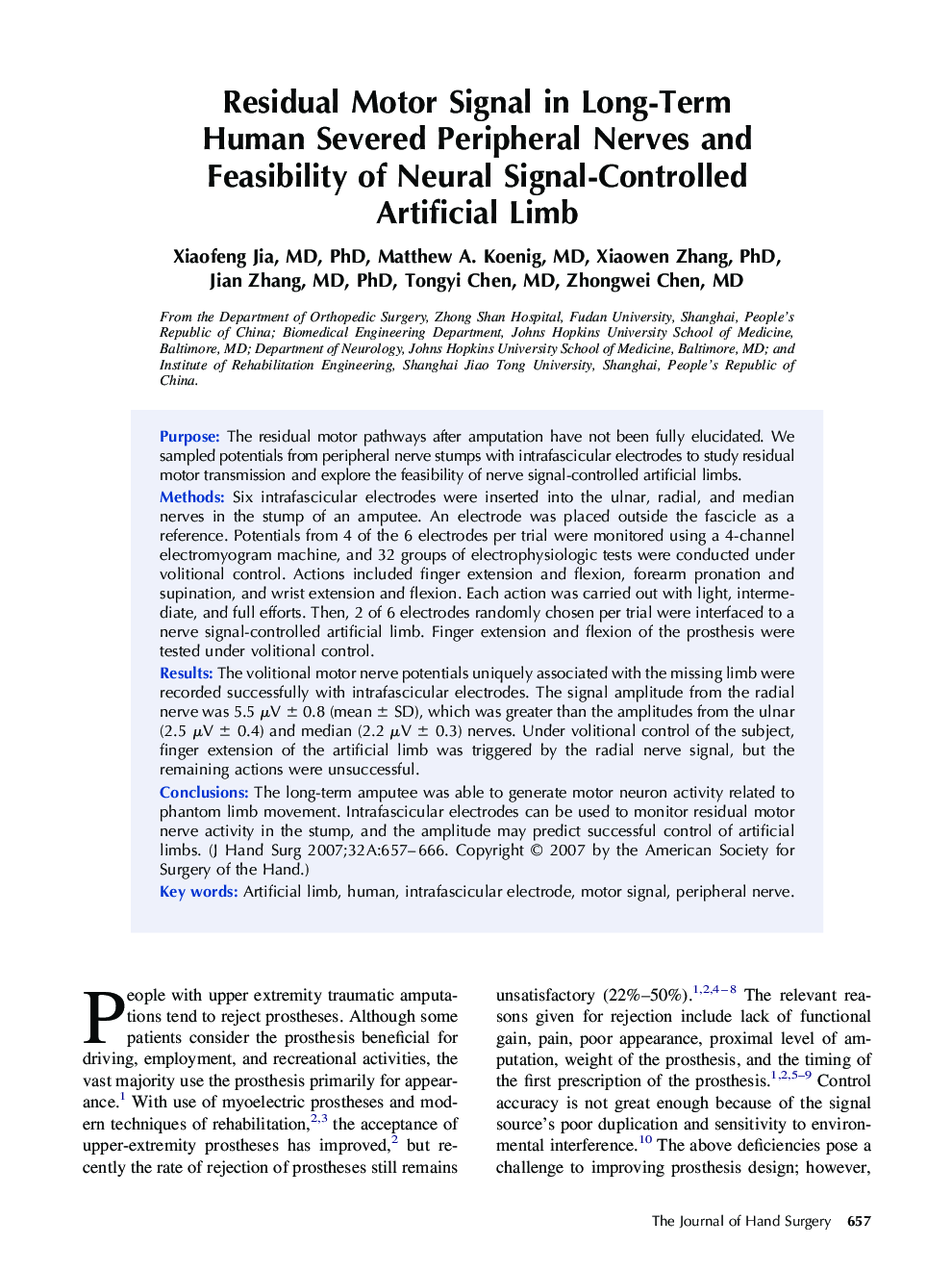| کد مقاله | کد نشریه | سال انتشار | مقاله انگلیسی | نسخه تمام متن |
|---|---|---|---|---|
| 4070280 | 1604453 | 2007 | 10 صفحه PDF | دانلود رایگان |

PurposeThe residual motor pathways after amputation have not been fully elucidated. We sampled potentials from peripheral nerve stumps with intrafascicular electrodes to study residual motor transmission and explore the feasibility of nerve signal-controlled artificial limbs.MethodsSix intrafascicular electrodes were inserted into the ulnar, radial, and median nerves in the stump of an amputee. An electrode was placed outside the fascicle as a reference. Potentials from 4 of the 6 electrodes per trial were monitored using a 4-channel electromyogram machine, and 32 groups of electrophysiologic tests were conducted under volitional control. Actions included finger extension and flexion, forearm pronation and supination, and wrist extension and flexion. Each action was carried out with light, intermediate, and full efforts. Then, 2 of 6 electrodes randomly chosen per trial were interfaced to a nerve signal-controlled artificial limb. Finger extension and flexion of the prosthesis were tested under volitional control.ResultsThe volitional motor nerve potentials uniquely associated with the missing limb were recorded successfully with intrafascicular electrodes. The signal amplitude from the radial nerve was 5.5 μV ± 0.8 (mean ± SD), which was greater than the amplitudes from the ulnar (2.5 μV ± 0.4) and median (2.2 μV ± 0.3) nerves. Under volitional control of the subject, finger extension of the artificial limb was triggered by the radial nerve signal, but the remaining actions were unsuccessful.ConclusionsThe long-term amputee was able to generate motor neuron activity related to phantom limb movement. Intrafascicular electrodes can be used to monitor residual motor nerve activity in the stump, and the amplitude may predict successful control of artificial limbs.
Journal: The Journal of Hand Surgery - Volume 32, Issue 5, May–June 2007, Pages 657–666